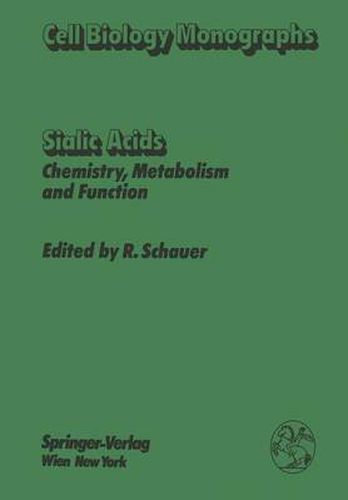Readings Newsletter
Become a Readings Member to make your shopping experience even easier.
Sign in or sign up for free!
You’re not far away from qualifying for FREE standard shipping within Australia
You’ve qualified for FREE standard shipping within Australia
The cart is loading…






This title is printed to order. This book may have been self-published. If so, we cannot guarantee the quality of the content. In the main most books will have gone through the editing process however some may not. We therefore suggest that you be aware of this before ordering this book. If in doubt check either the author or publisher’s details as we are unable to accept any returns unless they are faulty. Please contact us if you have any questions.
Rapid progress in the field of sialic acids has made it desirable to collect the new data about these unique sugars and to continue the series of books on this topic. In 1960, A. GOTTSCHALK wrote The Chemistry and Biology of Sialic Acids and Related Substances (Cambridge University Press) and in 1976, A. ROSENBERG and C. -L. SCHENGRUND published Biological Roles of Sialic Acids (Plenum Press). In this book emphasis is given to various modern methods used in the isolation and analysis of sialic acids. New approaches to the synthesis of free and bound sialic acids are described and the vast field of occurrence and metabolism of these substances is reviewed. Sialidoses are dealt with in one of the chapters, because sialidases have been recognized as factors of pathophysiological im portance. As knowledge is increasing about the involvement of sialic acids in many aspects of cell biology, another chapter is devoted to these phenomena. With this book I intend to demonstrate modern trends in sialic acid chemistry and biochemistry, and I hope that it will be of practical use and find its place in laboratories rather than in libraries. This publication offers an opportunity to thank all colleagues in many countries, including my coworkers at the universities of Bochum and Kiel, for their cooperation, stimulating discussions and, very important, useful criticism. The continuous cooperation with J. F. G. VLIEGENTHART and his coworkers, Utrecht, has been rewarding in many respects.
$9.00 standard shipping within Australia
FREE standard shipping within Australia for orders over $100.00
Express & International shipping calculated at checkout
This title is printed to order. This book may have been self-published. If so, we cannot guarantee the quality of the content. In the main most books will have gone through the editing process however some may not. We therefore suggest that you be aware of this before ordering this book. If in doubt check either the author or publisher’s details as we are unable to accept any returns unless they are faulty. Please contact us if you have any questions.
Rapid progress in the field of sialic acids has made it desirable to collect the new data about these unique sugars and to continue the series of books on this topic. In 1960, A. GOTTSCHALK wrote The Chemistry and Biology of Sialic Acids and Related Substances (Cambridge University Press) and in 1976, A. ROSENBERG and C. -L. SCHENGRUND published Biological Roles of Sialic Acids (Plenum Press). In this book emphasis is given to various modern methods used in the isolation and analysis of sialic acids. New approaches to the synthesis of free and bound sialic acids are described and the vast field of occurrence and metabolism of these substances is reviewed. Sialidoses are dealt with in one of the chapters, because sialidases have been recognized as factors of pathophysiological im portance. As knowledge is increasing about the involvement of sialic acids in many aspects of cell biology, another chapter is devoted to these phenomena. With this book I intend to demonstrate modern trends in sialic acid chemistry and biochemistry, and I hope that it will be of practical use and find its place in laboratories rather than in libraries. This publication offers an opportunity to thank all colleagues in many countries, including my coworkers at the universities of Bochum and Kiel, for their cooperation, stimulating discussions and, very important, useful criticism. The continuous cooperation with J. F. G. VLIEGENTHART and his coworkers, Utrecht, has been rewarding in many respects.